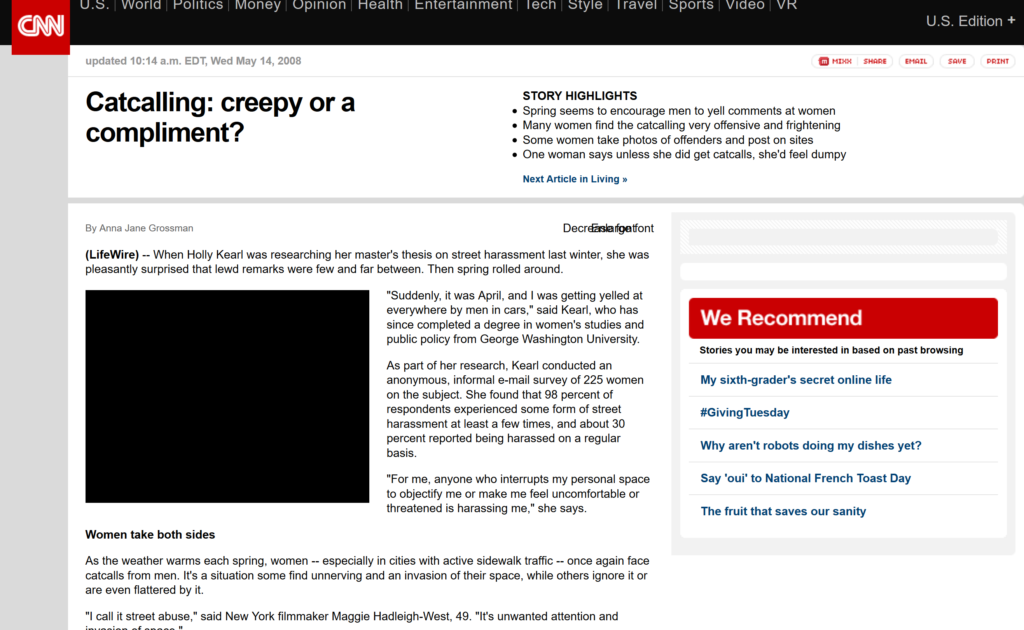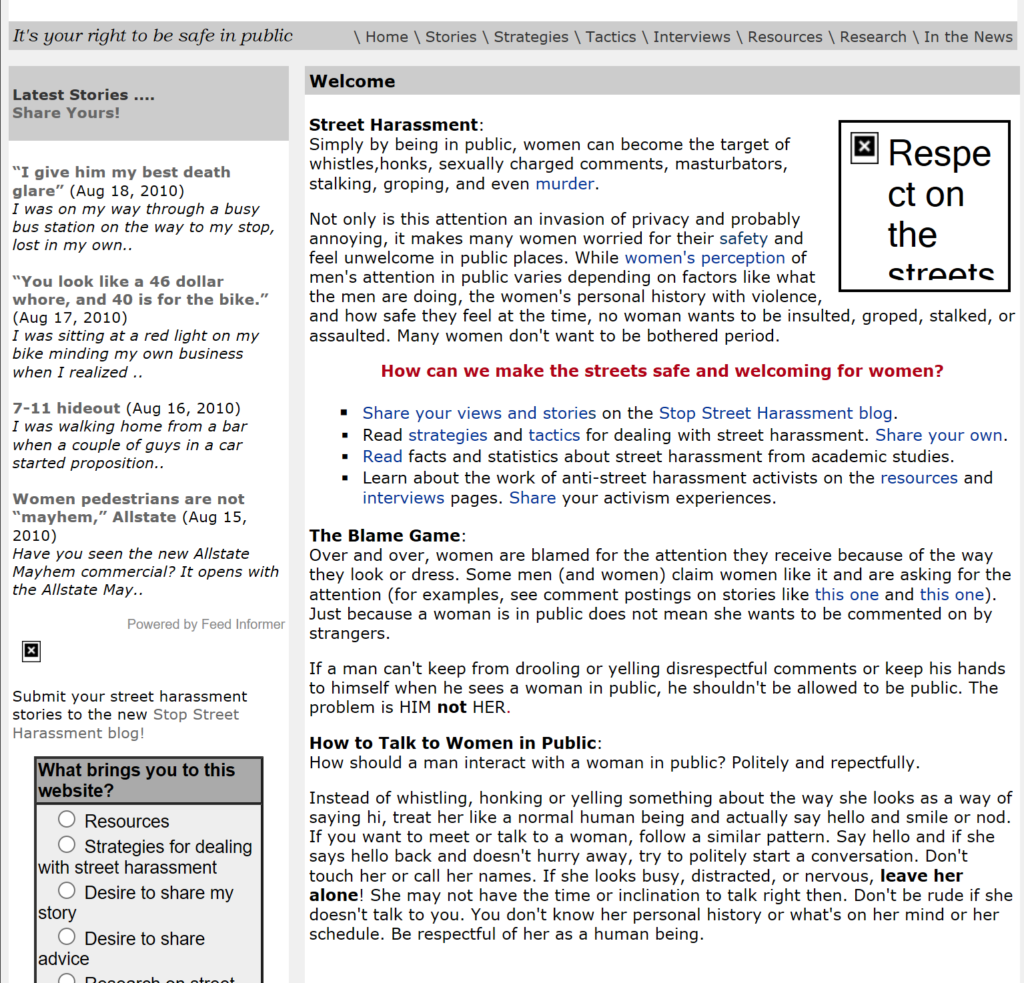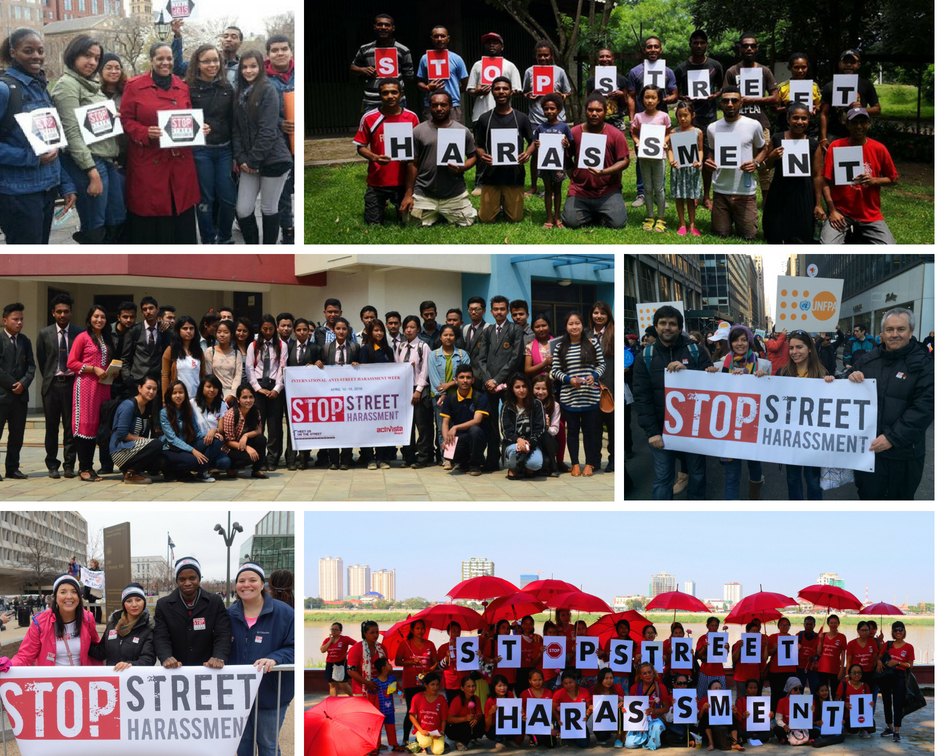This month marks the 10-year anniversary of Stop Street Harassment! I am so grateful to the thousands of people who have shared their stories on the blog; participated in International Anti-Street Harassment Week; served as Blog Correspondents, social media volunteers, interns and board members; donated to fund our programs; attended SSH talks; read our articles and publications; signed our petitions; and more. With the help of our community, we have achieved a lot in 10 years, particularly considering we are a small organization run by volunteers who all have other jobs.
To commemorate this big 10-year milestone, here is a history of how we came to be, followed by a list of 11 of our biggest achievements!
History of Stop Street Harassment
During the fall of 2006 and spring/summer of 2007, I researched and wrote my master’s thesis on gender-based street harassment while attending George Washington University in Washington, DC. I focused on how, in lieu of social recognition of the problem, women were using websites like the Street Harassment Project and Hollaback! chapter sites to share personal stories and strategies for dealing with street harassment. I conducted a small survey as part of my research. After I turned in my thesis, I put the survey results online – and reporters started finding it. At the time, there was so little accessible research on this topic that my thesis research was newsworthy.
 The most influential article that cited my thesis was one on CNN.com in May 2008. At that time, it was commonplace for people to view street harassment as a compliment, a minor annoyance, no big deal or the fault of the person being harassed. The title of the CNN article reflects this reality: “Catcalling: creepy or a compliment?” Really, though, the title should have read something like, “Catcalling: A form of street harassment that must end.”
The most influential article that cited my thesis was one on CNN.com in May 2008. At that time, it was commonplace for people to view street harassment as a compliment, a minor annoyance, no big deal or the fault of the person being harassed. The title of the CNN article reflects this reality: “Catcalling: creepy or a compliment?” Really, though, the title should have read something like, “Catcalling: A form of street harassment that must end.”
The article inspired dozens of blog posts and articles, hundreds of comments to the CNN article and many emails that I personally received that showed: 1) how common street harassment is and 2) how many misconceptions there are about the problem.
I was working full-time and I had no intention of becoming an anti-street harassment activist, but the response to the article demonstrated a clear need for public education on the topic. This need became more urgent once I went back to the websites I had analyzed for my thesis and found that the two websites I liked the best were either gone or inactive. Plus, at the time, unless you lived in one of the few cities with Hollaback! chapter sites, you didn’t have a place to publicly share your street harassment story. My domestic partner suggested I start my own website where I could share the resources I had collected through my thesis research. I also could provide space for story-sharing from people located anywhere in the world. I decided to do it.
In May 2008, Stop Street Harassment was born.
 SSH began as a website that listed resources about street harassment and there was a companion blog where people could share their stories (I combined the website and blog during a 2011 website redesign). After a few months, I also began to write blog posts tracking relevant news and initiatives globally. I regularly searched online for new initiatives and conducted interviews with the people running them (after a few years, there were so many of these efforts that I could no longer keep up with them!).
SSH began as a website that listed resources about street harassment and there was a companion blog where people could share their stories (I combined the website and blog during a 2011 website redesign). After a few months, I also began to write blog posts tracking relevant news and initiatives globally. I regularly searched online for new initiatives and conducted interviews with the people running them (after a few years, there were so many of these efforts that I could no longer keep up with them!).
In the years since, SSH’s work has expanded to include various public education components, community mobilization programs and direct services. Our projects usually have come about because I’ve seen a gap that needs to be filled and decide to fill it, be that by commissioning a nationally representative survey to collect data PROVING street harassment is a problem, founding a national hotline to provide emotional support for people facing street harassment, or organizing space for groups all over the world to join forces on an annual basis to speak out against street harassment together. SSH also does a lot of idea-sharing of what’s working in various parts of the world and makes introductions between activists when relevant.
One of my big goals in the early years of SSH was to document the problem, which we’ve done. Another was to help change the societal acceptance of street harassment as being inevitable, a compliment or the fault of the harassed person (e.g. see the CNN article title!). We’ve made a lot of progress there, too. While there are some people who still spew views that minimize and dismiss the harms of street harassment, there are fewer of them. Further, it is much less common for journalists, government officials and others who have a public voice to frame it this way. For instance, in 2011, the Washington Metropolitan Area Transit Authority publicly said regarding sexual harassment on the transit system: “One person’s harassment is another person’s flirting.” Now they are one of the transit systems doing the most in the world to address and prevent sexual harassment.
 There is still a lot of work left to do, but I feel pleased with what has changed in 10 years.
There is still a lot of work left to do, but I feel pleased with what has changed in 10 years.
Thank you to everyone who has supported SSH and has helped create a societal shift where street harassment is taken more seriously and addressed. Hopefully one day harassing strangers in public spaces will be completely socially unacceptable and then people of all genders and backgrounds can safely enjoy and utilize public spaces.
While much of our work is done pro bono, we are grateful to our donors who have made initiatives like our national studies and the hotline possible. You too can make a tax-deductible donation to keep our work going.
Read about 11 of our biggest achievements since May 2008!
